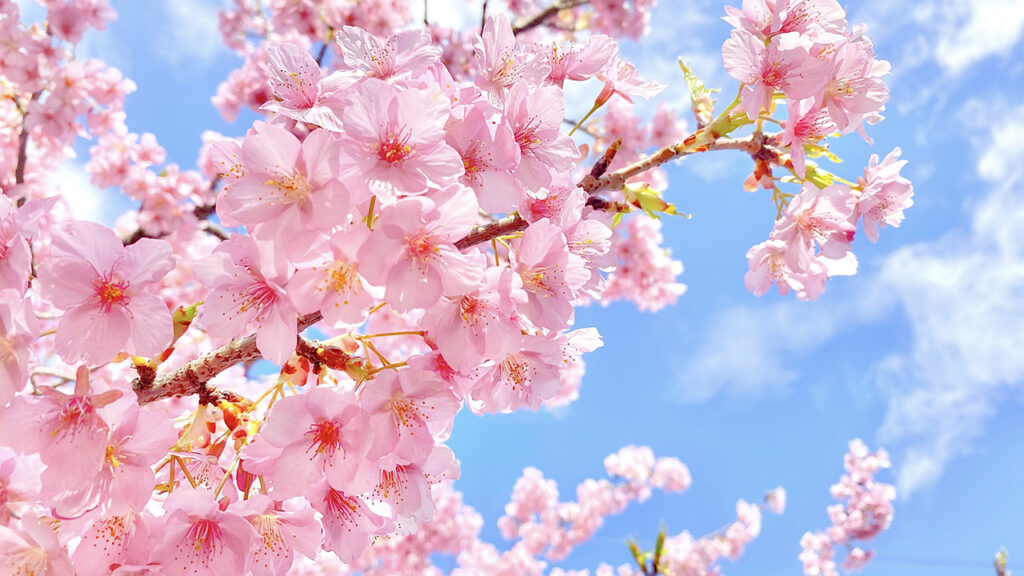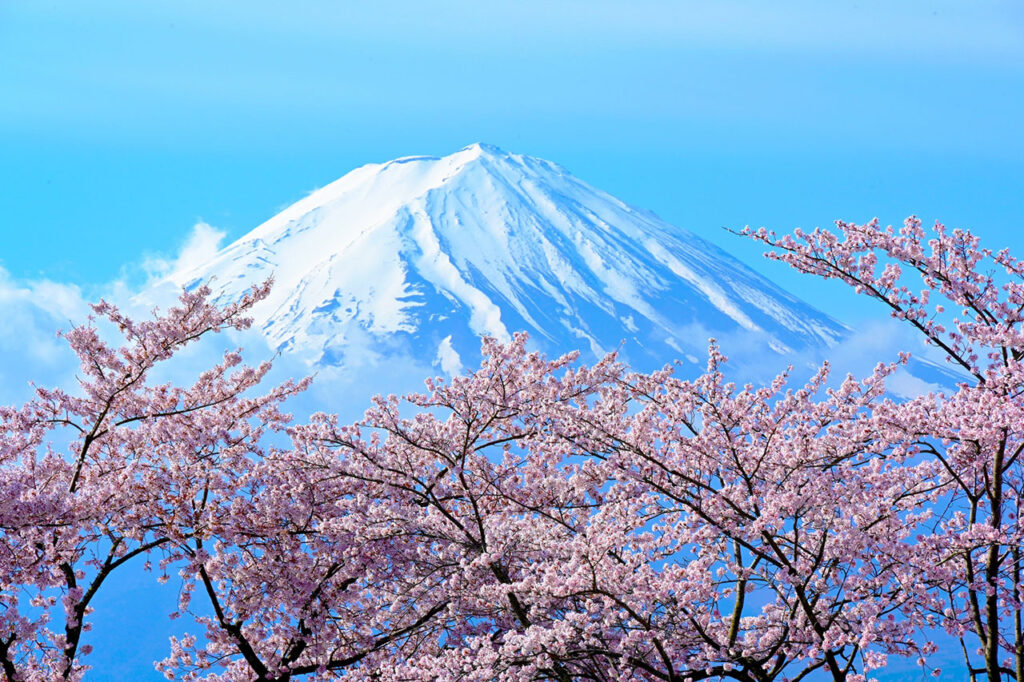Did you know that even many Japanese people don’t know the true story behind Japan’s most famous cherry blossoms?

Imagine visiting Japan and surprising your local friends with a fascinating tale they’ve never heard before.
It’s the perfect conversation starter—one that will make your trip even more unforgettable.
As you explore Japan, uncovering little-known facts like this could lead you to deeper connections and unexpected discoveries.
Today, we’re sharing a remarkable secret about Japan’s beloved sakura—one that will change the way you see these breathtaking blooms forever.
Japan’s Cherry Blossoms: A Genetic Mystery
Japan’s most iconic cherry blossom variety, the Somei Yoshino (Yoshino cherry tree), is admired for its breathtaking beauty—but did you know that every single tree of this species is genetically identical?
That’s right—each Somei Yoshino tree is a clone of the original!
But where did that first tree come from? When was it first cultivated?
These questions remain unanswered, and researchers are still on a quest to uncover the true origins of Japan’s most beloved sakura.
Tracing the Roots of Somei Yoshino: A Journey to Its Birthplace
If you visit Someiyoshino Sakura Memorial Park in Komagome, Toshima Ward, Tokyo, you’ll find a monument proudly declaring this area as the “Birthplace of Somei Yoshino.”
Long ago, this district was known as Somei, and during the Edo period, it flourished as a major hub for gardening.
With high demand from the grand estates of feudal lords, Somei became one of Japan’s leading centers for cultivating flowers and trees—paving the way for the creation of the iconic Somei Yoshino cherry blossom.
The Mysterious Origins of Somei Yoshino: A Cherry Blossom with an Unknown Past
During the late Edo to early Meiji period, gardeners from Somei began selling a new variety of cherry blossom under the name “Yoshino Sakura.”
The name was inspired by the famous cherry blossom-covered Mount Yoshino in Nara.
As Japan’s transportation network expanded, this beautiful tree spread across the country, eventually becoming the nation’s most iconic sakura.
Somei, known as “Edo’s horticultural center,” was home to highly skilled gardeners.
Shin’ichi Akiyama, a curator at Toshima Historical Museum, highlights the area’s deep connection to Japan’s gardening traditions.
Yet, the true origins of Somei Yoshino remain shrouded in mystery.
The name “Somei Yoshino” first appeared in written records in 1900, when botanist Yorinaga Fujino published a report in the Japan Horticultural Society Journal.
While admiring the cherry blossoms in Ueno Park, Fujino noticed they were different from the wild mountain cherries of Yoshino, Nara.
Realizing they had a distinct origin, he named them “Somei Yoshino” after the place where they were cultivated.
Even today, the exact birthplace of Somei Yoshino remains unknown, adding to the enduring intrigue of Japan’s most beloved sakura.
Solving the Mystery: DNA Research Unlocks the Origins of Somei Yoshino
The advancement of molecular biology has become a powerful tool in uncovering the origins of the Somei Yoshino cherry blossom.
With the introduction of DNA analysis, scientists first identified the maternal lineage of Somei Yoshino as Edo Higan (Prunus itosakura).
Further studies revealed that the paternal lineage comes from Oshima Zakura (Prunus speciosa)—though some theories suggest it may be a hybrid between Oshima Zakura and Yamazakura.
Genome sequencing research suggests that Somei Yoshino’s two ancestral species diverged around 5.52 million years ago.
Then, just over a century ago, these long-separated species hybridized, giving birth to the world’s most famous cherry blossom.
The Fragile Future of Somei Yoshino: A Cherry Blossom Dependent on Humans
Despite its widespread beauty, Somei Yoshino has a biological limitation—it cannot reproduce naturally through self-pollination.
This is due to a trait called self-incompatibility, meaning that Somei Yoshino trees cannot produce offspring by crossing with one another.
While they can hybridize with other cherry species, the resulting trees would be entirely new varieties.
In other words, Somei Yoshino cannot survive without human intervention.
If humanity were to suddenly disappear, these iconic cherry blossoms would no longer propagate on their own.
Over time, as each tree reached the end of its lifespan, Somei Yoshino would gradually vanish from the world.
Currently, the only way to propagate Somei Yoshino is through grafting—a process where cuttings from a parent tree are attached to a rootstock to grow new trees.
The original Somei Yoshino likely emerged when pollen from one cherry tree was carried—by wind, insects, or human hands—to the pistil of another, creating the very first hybrid.
Though admired by millions every spring, Somei Yoshino remains a delicate, human-dependent species—its very existence intertwined with our care.
Unraveling the Mystery of Somei Yoshino’s Origins: A Genetic Quest
Clues from Ueno Park
How close can we get to the original tree of Somei Yoshino?
This question continues to drive researchers in their quest to uncover the roots of Japan’s most beloved cherry blossom.
Professor Ikuro Nakamura, a plant geneticist at Chiba University, has been investigating Somei Yoshino trees near Prince Komatsu Akihito’s statue in Ueno Park, Tokyo.
Among them stands the original tree of Komatsu Otome, an Edo Higan variety.
Genetic analysis of six Edo Higan trees, including Komatsu Otome, and four Somei Yoshino trees in the park revealed that one of the Somei Yoshino trees is likely a sibling of Komatsu Otome.
“This suggests that not only Komatsu Otome but also Somei Yoshino may have originated here,” Nakamura explains.
Based on the planting arrangement, he has identified one tree as a strong candidate for the original Somei Yoshino.
Interestingly, this site was once home to the bell tower of Kan’ei-ji Temple, which had deep ties to the Tokugawa shogunate.
Historically, the land was owned by the Toda clan of Tsu Domain, who later moved their estate to Somei in Komagome—the birthplace of Somei Yoshino.
Genetic Analysis and the Search for the Original Tree
To trace Somei Yoshino’s lineage, a research team from Kazusa DNA Research Institute, Shimane University, and Kyoto Prefectural University conducted a genomic analysis on 46 Somei Yoshino trees across 19 prefectures.
Although Somei Yoshino trees are genetic clones propagated by grafting, mutations naturally occur as the trees grow.
When a mutated branch is used for grafting, the next generation carries that mutation.
By tracking these mutations, scientists can categorize trees into different lineages and work backward toward the original tree.
The study grouped the 46 trees into six genetic clusters, with the four Ueno Park trees each belonging to different clusters.
According to Kenta Shirasawa, a lead researcher at Kazusa DNA Research Institute, this finding suggests that Ueno Park’s trees were not randomly gathered from across Japan, but rather that they originated there and were later spread nationwide.
One of the four trees, which closely matches the genetic sequences of Somei Yoshino’s parent species (Edo Higan and Oshima Zakura), is now considered the closest known tree to the original Somei Yoshino.
The Search for a Chimera Tree
In fruit trees, ‘bud mutations’ (eda-gawari) can produce branches with unique characteristics, such as larger fruit or increased disease resistance.
Shirasawa theorizes that the original Somei Yoshino tree may have been a chimera, with different genetic mutations in its branches.
This could explain the presence of several genetic groups in Ueno Park.
To test this theory, the team has begun searching for ancient Somei Yoshino trees across Japan.
Their first target was two trees in Koishikawa Botanical Garden, Tokyo, planted between the late Edo and early Meiji periods.
However, so far, they have not been confirmed as the original tree.
With cutting-edge genome sequencing technology, researchers hope to solve one of Japan’s greatest botanical mysteries: Where did Somei Yoshino originate?
A Sea of Cherry Blossoms, Like an Unrolling Carpet
As spring arrives, Japan’s cherry blossoms bloom from south to north, gradually transforming the landscape as if a vast pink carpet is being unrolled.
This breathtaking spectacle draws visitors from around the world, who marvel at the delicate petals dancing in the wind.
Perhaps, as you stand beneath the cherry blossoms, catching a drifting petal in your hand, you’ll find yourself sharing this remarkable story—one that even many Japanese people do not yet know.

Experiencing Japan’s cherry blossoms is a must for visitors. Here are some renowned spots to enjoy these beautiful blooms:
- Ueno Park, Tokyo
- Address: Uenokoen, Taito City, Tokyo 110-0007, Japan
- Website: Ueno Park Official Website
- Description: A popular spot in Tokyo, Ueno Park boasts over a thousand cherry trees lining its central pathway, creating a stunning canopy of blossoms during the season. Japan Guide
- Shinjuku Gyoen National Garden, Tokyo
- Address: 11 Naitomachi, Shinjuku City, Tokyo 160-0014, Japan
- Website: Shinjuku Gyoen National Garden
- Description: This expansive garden features a diverse collection of cherry trees, offering a prolonged viewing season. Its spacious lawns and tranquil atmosphere make it ideal for hanami (flower viewing).
- Hirosaki Park, Aomori Prefecture
- Address: 1 Shimoshiroganecho, Hirosaki, Aomori 036-8356, Japan
- Website: Hirosaki Park Information
- Description: Home to Hirosaki Castle, the park is renowned for its cherry blossom festival, featuring over 2,500 trees and picturesque moats filled with fallen petals.
- Mount Yoshino (Yoshinoyama), Nara Prefecture
- Address: Yoshinoyama, Yoshino, Yoshino District, Nara 639-3115, Japan
- Website: Mount Yoshino Official Site
- Description: Famous for its thousands of cherry trees planted along the mountain slopes, Mount Yoshino offers breathtaking panoramic views and has been a cherished sakura spot for centuries. Japan Guide
- Kenrokuen Garden, Kanazawa
- Address: 1 Kenrokumachi, Kanazawa, Ishikawa 920-0936, Japan
- Website: Kenrokuen Garden Information
- Description: Recognized as one of Japan’s three most beautiful landscape gardens, Kenrokuen features delightful cherry blossoms that enhance its serene beauty in spring. Japan Guide
- Maruyama Park, Kyoto
- Address: Maruyamacho, Higashiyama Ward, Kyoto, 605-0071, Japan
- Website: Maruyama Park Details
- Description: Kyoto’s most popular hanami spot, Maruyama Park is famed for its massive weeping cherry tree that is illuminated at night, creating a magical atmosphere. Japan Guide
- Himeji Castle, Hyogo Prefecture
- Address: 68 Honmachi, Himeji, Hyogo 670-0012, Japan
- Website: Himeji Castle Official Website
- Description: This UNESCO World Heritage Site is surrounded by numerous cherry trees, offering a spectacular contrast between the white castle and pink blossoms.
- Philosopher’s Path, Kyoto
- Address: Sakyo Ward, Kyoto, 606-8406, Japan
- Website: Kyoto Travel: Philosopher’s Path
- Description: A pleasant stone path following a canal, lined with hundreds of cherry trees. It’s an ideal spot for a peaceful stroll during the cherry blossom season.
These locations offer unique and memorable experiences during Japan’s cherry blossom season. Be sure to check local forecasts and bloom times to plan your visit accordingly.
















